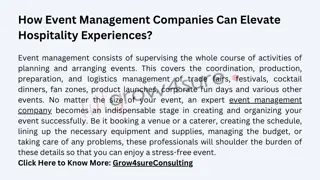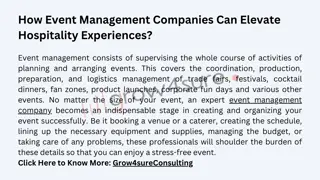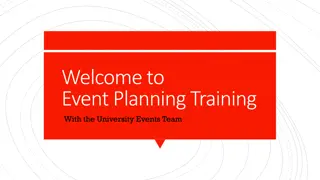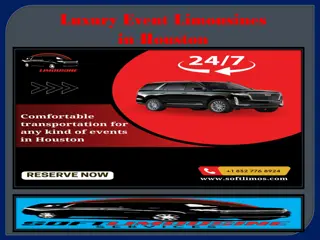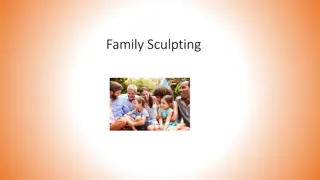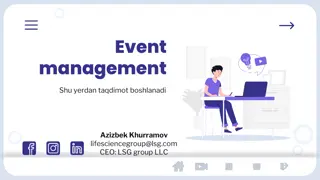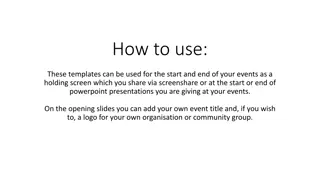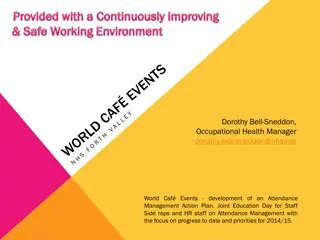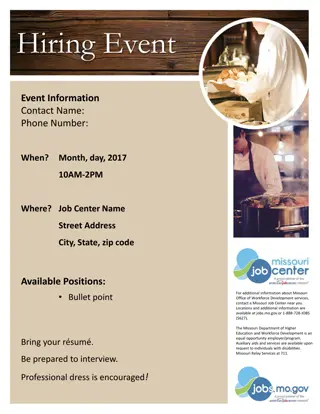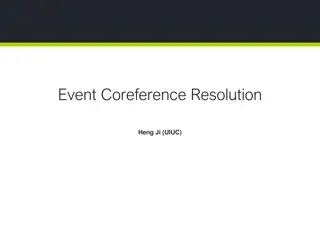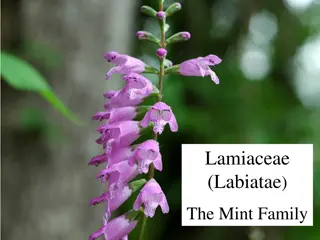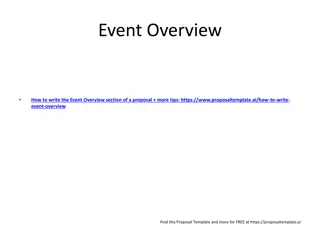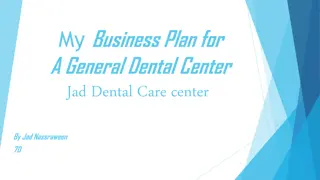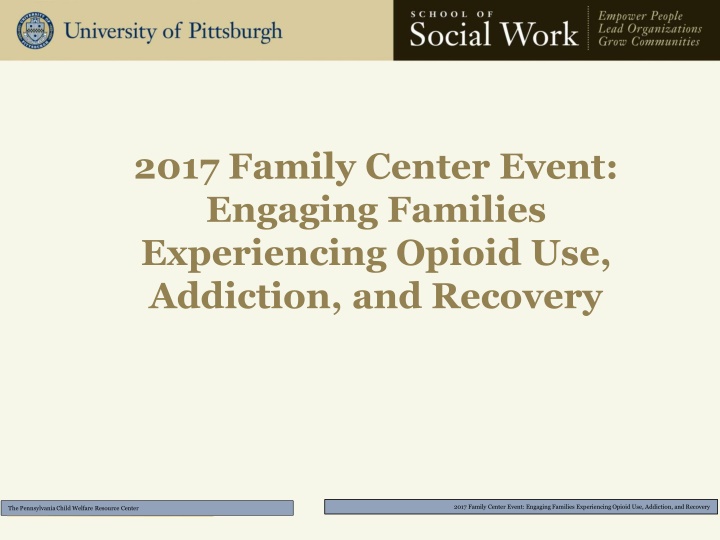
Engaging Families Experiencing Opioid Use and Addiction: Insights and Strategies
Explore the impact of opioid use and addiction on child development, warning signs, recovery components, and engaging conversations with parents. Dive into the American culture of addiction, risk factors, and the association between childhood maltreatment and drug use.
Download Presentation

Please find below an Image/Link to download the presentation.
The content on the website is provided AS IS for your information and personal use only. It may not be sold, licensed, or shared on other websites without obtaining consent from the author. If you encounter any issues during the download, it is possible that the publisher has removed the file from their server.
You are allowed to download the files provided on this website for personal or commercial use, subject to the condition that they are used lawfully. All files are the property of their respective owners.
The content on the website is provided AS IS for your information and personal use only. It may not be sold, licensed, or shared on other websites without obtaining consent from the author.
E N D
Presentation Transcript
2017 Family Center Event: Engaging Families Experiencing Opioid Use, Addiction, and Recovery 2017 Family Center Event: Engaging Families Experiencing Opioid Use, Addiction, and Recovery The Pennsylvania Child Welfare Resource Center
Learning Objectives: Identify the impact of opioid use, addiction, and recovery on child development Identify warning signs of opioid use and abuse Discuss the five components of recovery Engage parents in conversations regarding opioid use, addiction, and recovery 2017 Family Center Event: Engaging Families Experiencing Opioid Use, Addiction, and Recovery The Pennsylvania Child Welfare Resource Center
Our Culture of Addiction Addiction is present in all cultures, but it is possible that the American experience is one that makes us more prone to the risk factors associated with addiction. 2017 Family Center Event: Engaging Families Experiencing Opioid Use, Addiction, and Recovery The Pennsylvania Child Welfare Resource Center
Our Culture of Addiction (continued) Factors that may influence high rates of addiction in our culture (these are broad generalizations). Pick yourself up by your own bootstraps Rugged independence The quick fix mentality 2017 Family Center Event: Engaging Families Experiencing Opioid Use, Addiction, and Recovery The Pennsylvania Child Welfare Resource Center
Our Culture of Addiction (continued) Wide exposure to drugs with addictive potential; Heavy prescription drug use 4.3% world population over 80% of prescribed opiates Illicit use of prescription drugs Increasing heroin purity Rise of synthetic drugs 2017 Family Center Event: Engaging Families Experiencing Opioid Use, Addiction, and Recovery The Pennsylvania Child Welfare Resource Center
Adverse Childhood Experiences (ACE) Study Assessed associations between childhood maltreatment (trauma) and later-life health and well-being Illicit drug use is identified in Healthy People 2010 as a leading health indicator because it is associated with multiple deleterious health outcomes Strong relationship to the risk of drug initiation from early adolescence into adulthood and to problems with drug use, drug addiction, and parenteral use 2017 Family Center Event: Engaging Families Experiencing Opioid Use, Addiction, and Recovery The Pennsylvania Child Welfare Resource Center
Adverse Childhood Experiences Abuse: Emotional, physical, and sexual Neglect: Emotional and physical Household Dysfunction 2017 Family Center Event: Engaging Families Experiencing Opioid Use, Addiction, and Recovery The Pennsylvania Child Welfare Resource Center 7
ACE Study Pyramid Death Early Death Disease, Disability and Social Problems Scientific gaps Adoption of Health-risk Behaviors Social, Emotional, & Cognitive Impairment Adverse Childhood Experiences Conception 8 2017 Family Center Event: Engaging Families Experiencing Opioid Use, Addiction, and Recovery The Pennsylvania Child Welfare Resource Center
Major Findings ACE s are common Two-thirds of participants reported at least one More thank 20% reported three or more Short and long-term outcomes of these childhood exposures include a multitude of health and social problems The ACE score used to assess the total amount of childhood stress As the number of ACE increase, the risk of health problems increases in a strong and graded fashion 2017 Family Center Event: Engaging Families Experiencing Opioid Use, Addiction, and Recovery The Pennsylvania Child Welfare Resource Center 9
ACES and Children in Foster Care Eighty percent of the children in foster care have at least one long-term health problem Twenty-five percent of the children in foster care have 3 or more long-term health problems This is 3-7 times greater than found among children living in poverty 2017 Family Center Event: Engaging Families Experiencing Opioid Use, Addiction, and Recovery The Pennsylvania Child Welfare Resource Center 10
Drug Classifications Tobacco Alcohol Cannabinoids Opioids Stimulants Club Drugs Dissociative Drugs Hallucinogens Prescription Drugs Over-the-counter Other Compounds 2017 Family Center Event: Engaging Families Experiencing Opioid Use, Addiction, and Recovery The Pennsylvania Child Welfare Resource Center
Methods of Drug Use Smoking Snorting Injecting Swallowing Inhaling Skin absorption 2017 Family Center Event: Engaging Families Experiencing Opioid Use, Addiction, and Recovery The Pennsylvania Child Welfare Resource Center
2017 Family Center Event: Engaging Families Experiencing Opioid Use, Addiction, and Recovery The Pennsylvania Child Welfare Resource Center
Opioid Basics, Opioid Drugs Prescription Opioids Prescription opioids can be prescribed by doctors to treat moderate to severe pain but can also have serious risks and side effects Common types are oxycodone (OxyContin), hydrocodone (Vicodin), morphine, and methadone 2017 Family Center Event: Engaging Families Experiencing Opioid Use, Addiction, and Recovery The Pennsylvania Child Welfare Resource Center
From 1999 to 2013, the amount of prescription opioids dispensed in the U.S. nearly quadrupled. 2017 Family Center Event: Engaging Families Experiencing Opioid Use, Addiction, and Recovery The Pennsylvania Child Welfare Resource Center
Opioid Basics, Opioid Drugs (continued) Fentanyl Fentanyl is a synthetic opioid pain reliever. It is many times more powerful than other opioids and is approved for treating severe pain, typically advanced cancer pain. Illegally made and distributed fentanyl has been on the rise in several states. 2017 Family Center Event: Engaging Families Experiencing Opioid Use, Addiction, and Recovery The Pennsylvania Child Welfare Resource Center
Opioid Basics, Opioid Drugs (cont.) Heroin Heroin is a powerful opiate drug. It looks like a white or brownish powder, or as the black sticky substance known on the streets as black tar heroin. Some of the physical symptoms of heroin are euphoria, drowsiness, respiratory depression, constricted pupils, nausea, and dry mouth. A heroin overdose causes slow and shallow breathing, blue lips and fingernails, clammy skin, convulsions, coma, and can be fatal. Almost five million people have used heroin at some point in their lives. 2017 Family Center Event: Engaging Families Experiencing Opioid Use, Addiction, and Recovery The Pennsylvania Child Welfare Resource Center
Opioid Basics, Opioid Drugs (cont.) Heroin Heroin is an illegal opioid. Heroin use has increased across the U.S among men and women, most age groups, and all income levels. The number of drug overdose deaths has never been higher and the majority of these deaths (more than six out of ten in 2015) involved opioids. 2017 Family Center Event: Engaging Families Experiencing Opioid Use, Addiction, and Recovery The Pennsylvania Child Welfare Resource Center
Prescription Opioids Since 1999, the amount of prescription opioids sold in the U.S. nearly quadrupled. Deaths from prescription opioids drugs such as; Oxycodone Hydrocodone Methadone 2017 Family Center Event: Engaging Families Experiencing Opioid Use, Addiction, and Recovery The Pennsylvania Child Welfare Resource Center
Prescription Opioids Over 4 million Americans engaged in non medical use of prescription painkillers in the last month. Approximately 1.9 million Americans met criteria for prescription painkillers use disorder based on their use of prescription painkillers in the last year. Over 1 million people used prescription painkillers non medically for the first time in the past year. The average age for prescription painkiller first-time use was 21.2 in the past year. 2017 Family Center Event: Engaging Families Experiencing Opioid Use, Addiction, and Recovery The Pennsylvania Child Welfare Resource Center
2017 Family Center Event: Engaging Families Experiencing Opioid Use, Addiction, and Recovery The Pennsylvania Child Welfare Resource Center
Stages of Addiction Stage 1: Drug Experimentation Stage 2: Social Drug Use, Regular Use Stage 3: Problem Use, Risky Use (Binge Drinking) Stage 4: Chemical Dependency (Psychological vs. Physical) Stage 5: Addiction 2017 Family Center Event: Engaging Families Experiencing Opioid Use, Addiction, and Recovery The Pennsylvania Child Welfare Resource Center
Drug Effects Dose A specified quantity of a therapeutic agent, such as a drug or medicine prescribed to be taken at one time or at stated intervals. Potency strength, amount needed to produce an effect, usually in terms of milligrams Efficacy Potential maximum therapeutic response Absorption The movement of a drug into the bloodstream Toxicity Critical or lethal reaction, human error or intentional overdose 2017 Family Center Event: Engaging Families Experiencing Opioid Use, Addiction, and Recovery The Pennsylvania Child Welfare Resource Center
Consequences of Addiction Physical Spiritual Mental Emotional 2017 Family Center Event: Engaging Families Experiencing Opioid Use, Addiction, and Recovery The Pennsylvania Child Welfare Resource Center
Seven Possible Signs of Drug Involvement Change in school or work performance Alteration of personal appearance Mood swings or attitude changes Withdrawal from responsibilities and/or family contacts Association with drug using peers Unusual patterns of behavior Defensive attitude concerning drugs 2017 Family Center Event: Engaging Families Experiencing Opioid Use, Addiction, and Recovery The Pennsylvania Child Welfare Resource Center
Characteristics of Families Affected by Substance Use Leads to: An anxious family environment Inconsistent parenting Unpredictable rules Rigid external boundaries Inadequate personal boundaries Secrets and shame-based life Role reversal Victim blaming Lack of: Self-Actualization Esteem Love, Affection, Belonging Safety Physiological = 2017 Family Center Event: Engaging Families Experiencing Opioid Use, Addiction, and Recovery The Pennsylvania Child Welfare Resource Center 26
Addressing Addiction Voluntary-self-motivated Involuntary- criminal justice system, children & youth services, employee assistance programs Intervention- externally motivated 2017 Family Center Event: Engaging Families Experiencing Opioid Use, Addiction, and Recovery The Pennsylvania Child Welfare Resource Center
Definition of Denial Terence Gorski, N.C.A.C. II, C.S.A.C., a well-known professional in the field of addiction, defines denial as: a normal response/defense for coping with painful and overwhelming problems. [Denial] has both benefits and disadvantages. The benefit is that it temporarily removes the pain caused by consciously confronting a serious problem while creating the illusion that the problem is being solved. The biggest disadvantage of denial is that it blocks recognition and problem solving. 2017 Family Center Event: Engaging Families Experiencing Opioid Use, Addiction, and Recovery The Pennsylvania Child Welfare Resource Center 28
Identifying Denial Patterns 1. Comparing 8. Manipulating 2. Compliance 9. Flight into Health 3. Avoidance 10. Recovery by Fear 4. Absolute Denial 11. Strategic Hopelessness 5. Minimizing 12. The Democratic Disease State 6. Rationalizing 7. Blaming 2017 Family Center Event: Engaging Families Experiencing Opioid Use, Addiction, and Recovery The Pennsylvania Child Welfare Resource Center 29
Principles of Effective Drug and Alcohol Treatment (cont.) Behavioral therapies,includingindividual, family, or group counseling, are the most commonly used forms of drug abuse treatment. Medications are an important element of treatment for many patients, especially when combined with counseling and other behavioral therapies. An individual s treatment and services plan must be assessed continually and modified as necessary to ensure that it meets his or her changing needs. Many drug-addicted individuals also have other mental disorders. 2017 Family Center Event: Engaging Families Experiencing Opioid Use, Addiction, and Recovery The Pennsylvania Child Welfare Resource Center
Principles of Effective Drug and Alcohol Treatment (cont.) Medically assisted detoxification is only the first stage of addiction treatment and by itself does little to change long-term drug abuse. Treatment does not need to be voluntary to be effective. Drug use during treatment must be monitored continuously, as lapses during treatment do occur. Treatment programs should test patients for the presence of HIV/AIDS, hepatitis B and C, tuberculosis, and other infectious diseases as well as provide targeted risk-reduction counseling, linking patients to treatment if necessary. 2017 Family Center Event: Engaging Families Experiencing Opioid Use, Addiction, and Recovery The Pennsylvania Child Welfare Resource Center
2017 Family Center Event: Engaging Families Experiencing Opioid Use, Addiction, and Recovery The Pennsylvania Child Welfare Resource Center
Making A Formal Referral Two Types of Referrals An informal referral, which usually occurs when substance uses does not endanger the safety or well-being of the child. A formal referral, occurring when someone initiates a contract with an assessment, counseling, treatment, or other AOD agency on behalf of a client who has a substance abuse concern, becomes vital 2017 Family Center Event: Engaging Families Experiencing Opioid Use, Addiction, and Recovery The Pennsylvania Child Welfare Resource Center
Stages of Change Model Carlo C. DiClemente and J. O. Prochaska, developed model of change to help people understand addiction problems and motivation to change. The six stages of the model are: 1. Pre-contemplation 2. Contemplation 3. Determination 4. Action 5. Maintenance 6. Re-occurrence 2017 Family Center Event: Engaging Families Experiencing Opioid Use, Addiction, and Recovery The Pennsylvania Child Welfare Resource Center 34
Four Dimensions of the Recovery Process Health Improving and sustaining health Home a stable and safe place to live Purpose conducting meaningful life activities Community having relationships and social networks that provide support, friendship, love, and hope 2017 Family Center Event: Engaging Families Experiencing Opioid Use, Addiction, and Recovery The Pennsylvania Child Welfare Resource Center 35
Community Based Recovery Supports Recovery House unlicensed and unregulated facility in which recovering people rent living space and offer each other a supportive drug-free environment. 12-STEP Meetings - A support group setting of individuals supporting and encouraging one another through the recovery process. Other Self-Help Recovery Support Groups (non 12-Step) Some are faith based, Some are secular. 2017 Family Center Event: Engaging Families Experiencing Opioid Use, Addiction, and Recovery The Pennsylvania Child Welfare Resource Center 36
Components of Recovery Physical Recovery good nutrition exercise adequate sleep, relaxation, medical help Emotional Recovery learning to cope with and calm feelings reduce stress change negative thinking Spiritual Recovery develop a sense of purpose and meaning in life increase feelings of hope and joy trust that there is good in life Social Recovery develop relationships with sober people develop healthy social and leisure interests learn or practice social skills feel relaxed around and connected with sober people. Family Recovery examine effects of addiction on one s family involve accept criticism making amends 2017 Family Center Event: Engaging Families Experiencing Opioid Use, Addiction, and Recovery The Pennsylvania Child Welfare Resource Center 37
References Gorski, T.T. (2001, Summer). Denial management counseling. Paradigm Magazine, 6(3) and 5(2), 20-21 Retrieved November 14, 2005 from https://terrygorski.com/2016/01/09/denial-management-counseling-dmc/ National Association of Children of Alcoholics. (2011). Celebrating Families. Retrieved from: http://www.celebratingfamilies.net/curriculum.htm National Survey on Drug Use and Health. (2013). Heroin use is part of a larger substance abuse problem. Retrieved from: https://nsduhweb.rti.org/respweb/homepage.cfm## Prochaska, J.O., & DiClemente, C.C. (1984). The transtheoretical approach: Crossing traditional boundaries of therapy. Homewood, III: Dow Jones-Irwin. Substance Abuse and Mental Health Services Administration. (2016). Opioids. Retrieved from: https://www.samhsa.gov/atod/opioids 2017 Family Center Event: Engaging Families Experiencing Opioid Use, Addiction, and Recovery The Pennsylvania Child Welfare Resource Center


